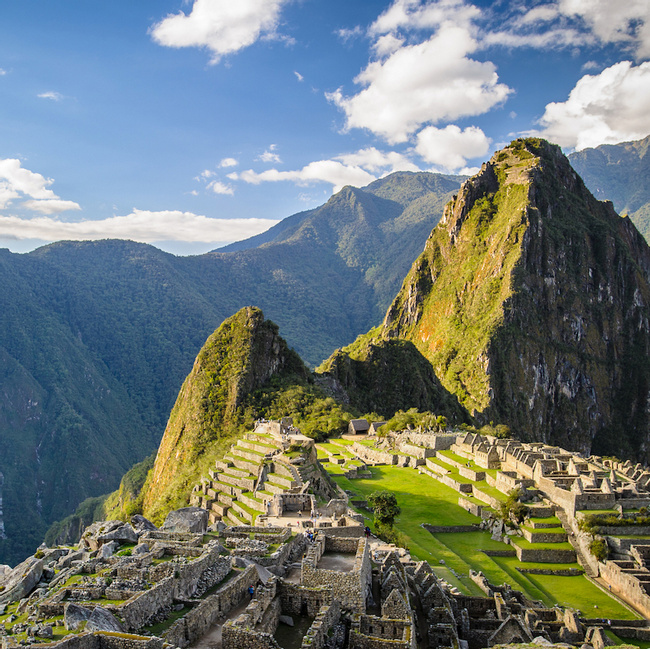- Travel Guides
The Inca Empire, Spanish Conquest, and Independence
Peru boasts a rich and diverse history—a fact which tends to be well known and reflected in modern day Peruvian culture. However, did you know that Peru's history includes some of the oldest societies in all of Latin America? Get an overview of Peruvian history, and learn how the country evolved from the era of the Inca, to Spanish colonialism, and finally, freedom.

Inca Empire (1200 - 1572)
One of Peru's most well-known civilizations is that of the Inca Empire. The Inca started out in the Cusco region in the valley surrounding the Urumbaba River, which is now known as the Sacred Valley. They formed in 1200 AD and spread out gradually, finally dominating the highlands of the Andes in the 15th century under the leadership of Pachacútec. In the century before the Spanish arrived, the Inca Empire stretched along a huge swath of the west coast of South America, from Ecuador to Chile, covering 772,204 square miles (2,000,000 sq km). Arguably, the decline of the Inca Empire began when their rule was challenged by the arrival of European Spaniards, but the Inca chose to fight until the bitter end.
Spanish Conquest (1526 – 1572)
In 1526, the Spanish arrived in Peru. Led by Francisco Pizarro, Spanish colonists made their appearance just after a long civil war between two rival Inca kings, which served to weakened the Inca’s defenses. A series of clashes over the next several decades ended with the Spanish execution of the last Inca leader, Túpac Amaru, in 1572.
The Spanish forced natives to mine for silver and mercury, for almost no pay. Natives were also coerced to convert to Catholicism. In many cases, whole tribes were driven far from their homes.
Independence
By the 18th century, many Peruvians had both European and indigenous ancestors, creating an ethnicity known as mestizos. The Spanish had also imported slaves from Africa, and the slaves and their descendants developed their own subculture within Peru. These new generations of Peruvian natives came to increasingly resent Spain’s governance.
In 1808, Spain’s control over South America weakened when Napoleon ousted King Charles IV from the Spanish throne. Jose de San Martín of Argentina and Simón Bolívar of Venezuela both contributed their forces to help liberate Lima from Spanish control. By 1824, Peru was an independent nation. Political stability, however, did not come quickly. After Peru gained independence, a series of military leaders took control. The first president was not elected until 1872.
The Fight for Stability
It wasn't until the 1990s that Peru became the true constitutional republic it is today. Throughout much of the 20th and 21st centuries, Peru has grappled with political struggles. One of the most dramatic of which was the Fujimori Regime.
In 2001, Peru got its first true taste of independence and stability as the nation's leadership came full circle with the election of Peru's first indigenous president, Alejandro Toledo. The governmental stability and economic growth Peru now enjoys is the result of hard work, a tenacious society, and centuries of effort.
References
To learn more about Peruvian history in greater depth, explore some of the resources we used on our reference page.
It's more than just having a good time or visiting beautiful places (although that's absolutely a part of it!), it's about being part of a unique experience that stays with you.



